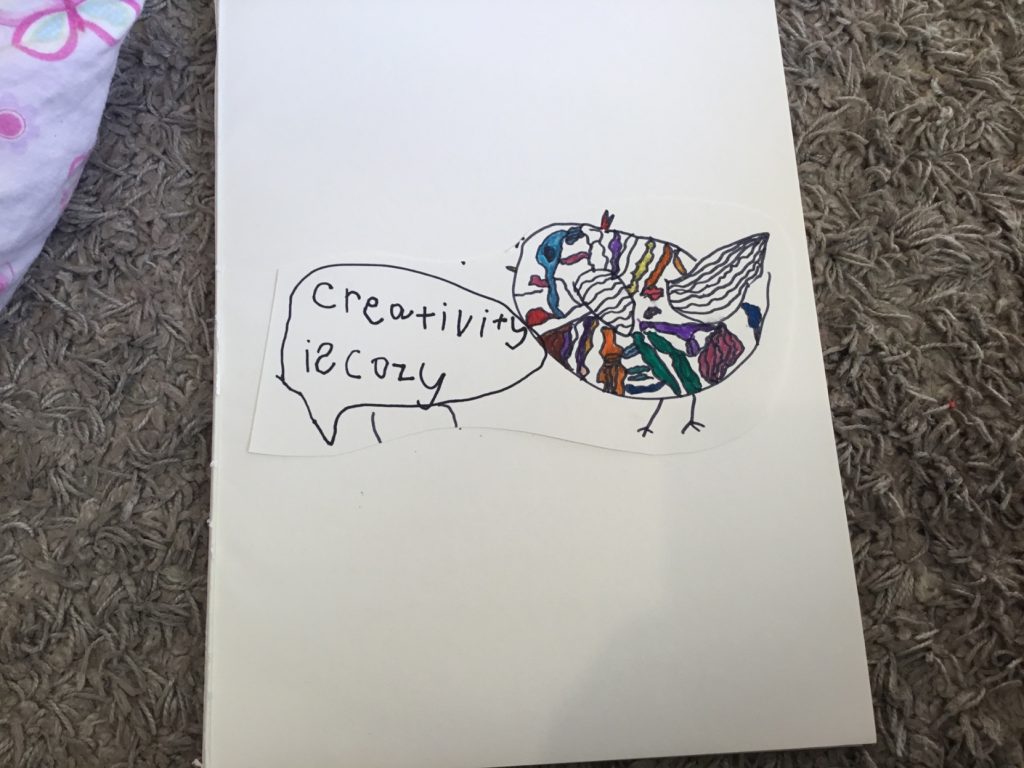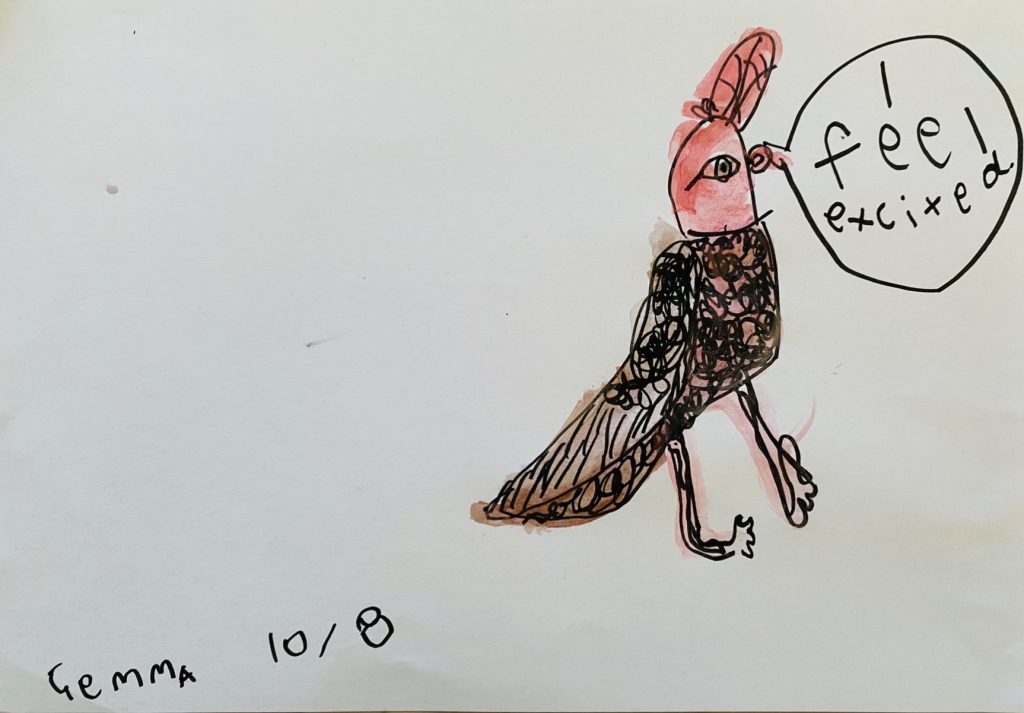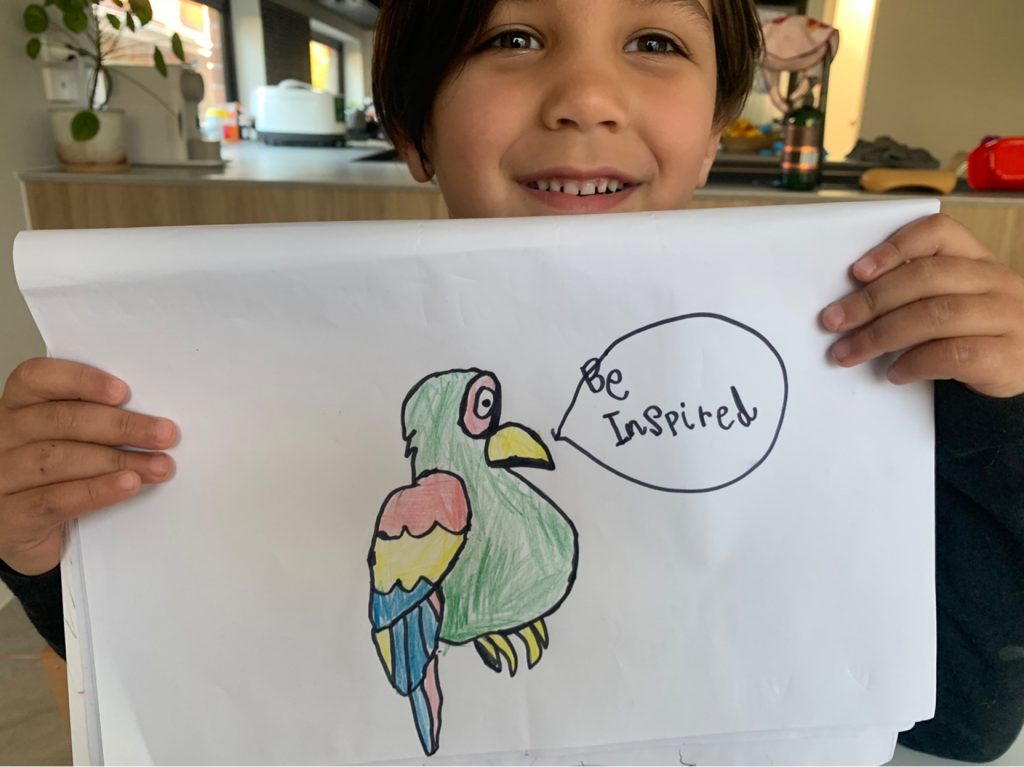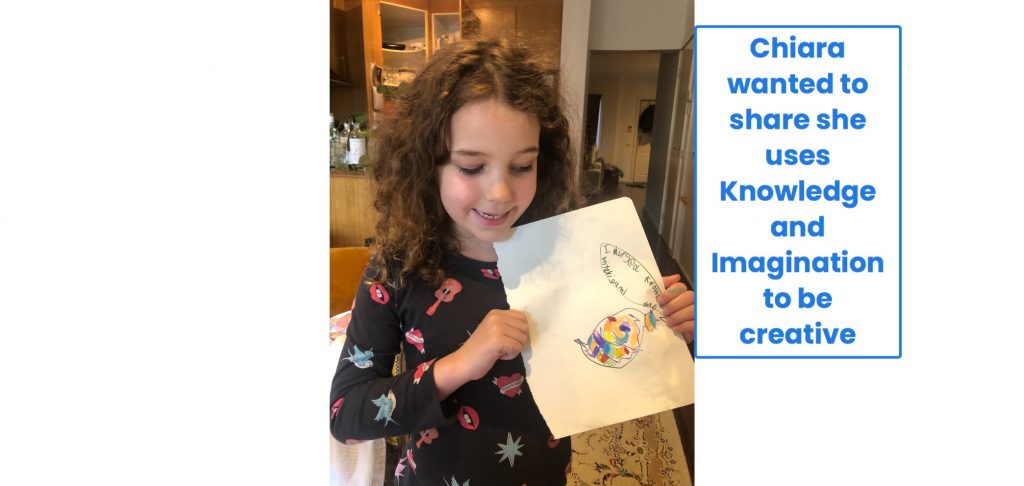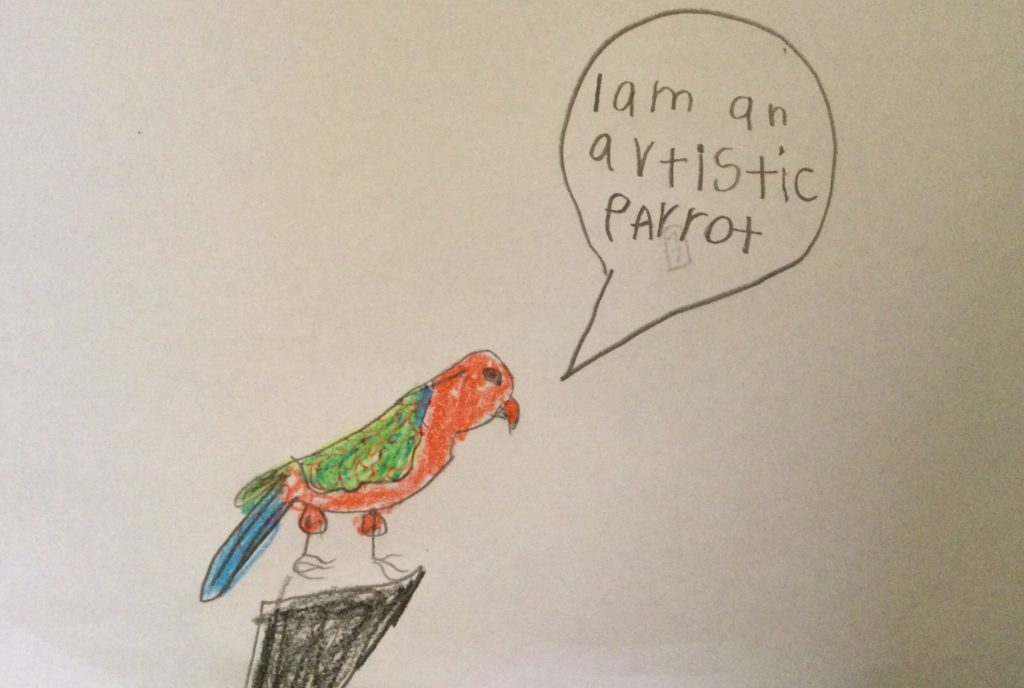There are many parts to the whole…
As the Preps work individually on provocations, remote learning can feel isolating and as though we are learning in a bubble. We, as educators, have been provoking students to explore concepts that ultimately support students’ collective understandings and projects.
Collectively, Preps identified that creativity needs to be defined in multiple ways. We recognise that we all experience creativity in different ways, yet some themes have emerged within our thinking.
Creativity in storytelling, writing and words
Creativity and nature and science
Creativity and our brains
Creativity and beauty
Creativity and Construction
You can learn how to write and draw, it will help you to be creative. Badral
Being creative is about building something new. Charlie
I want to learn more about being creative with blocks. What do you have to do to be creative in the blocks? Max K
Science is creative because you are thinking what to do. Arlo H
Science, this is how it is creative. You use your brain and your hands slowly. Max K
If you looking out for creativity you would look for art and science. Max K
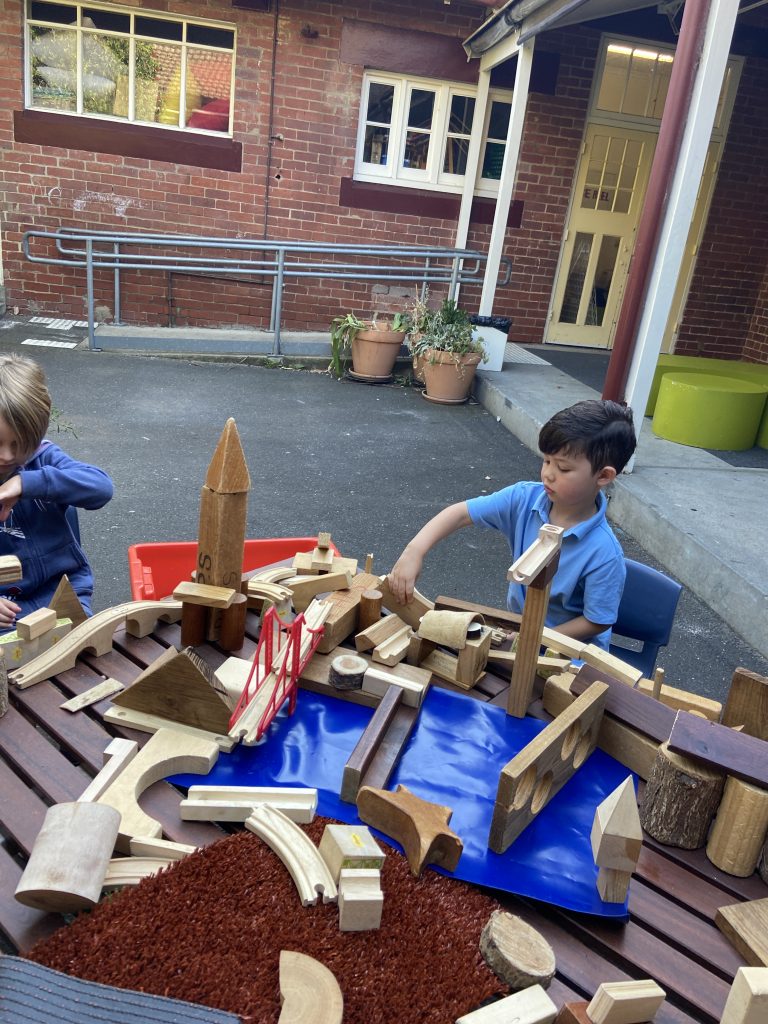
Construction & Creativity 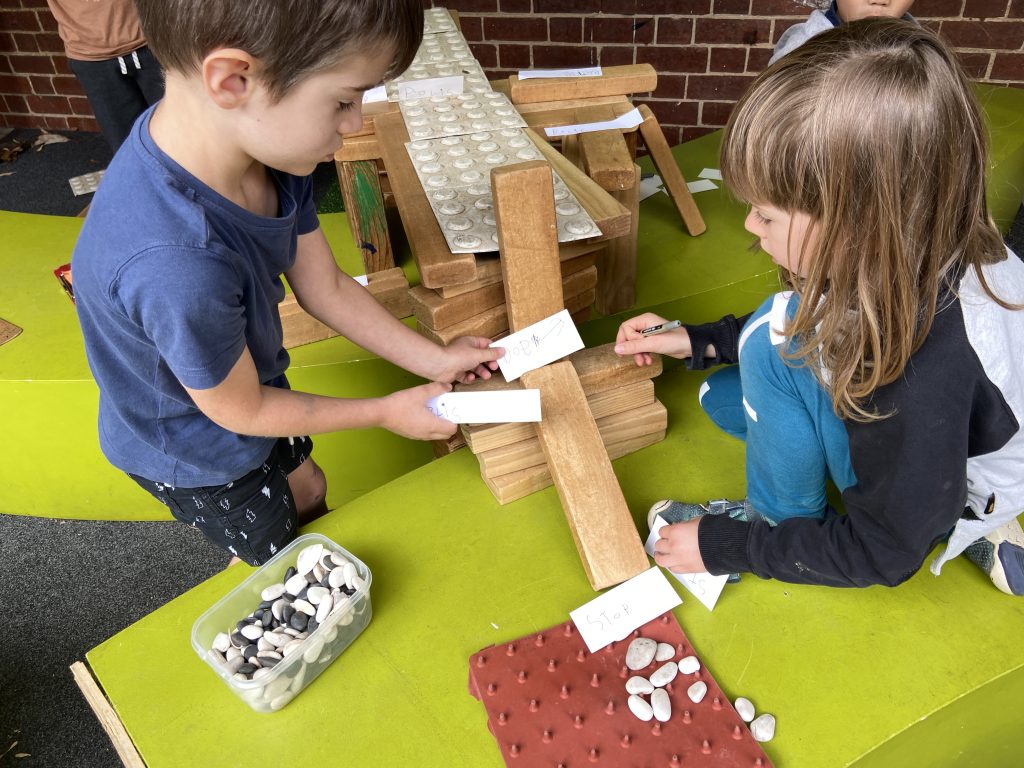
Construction & Creativity 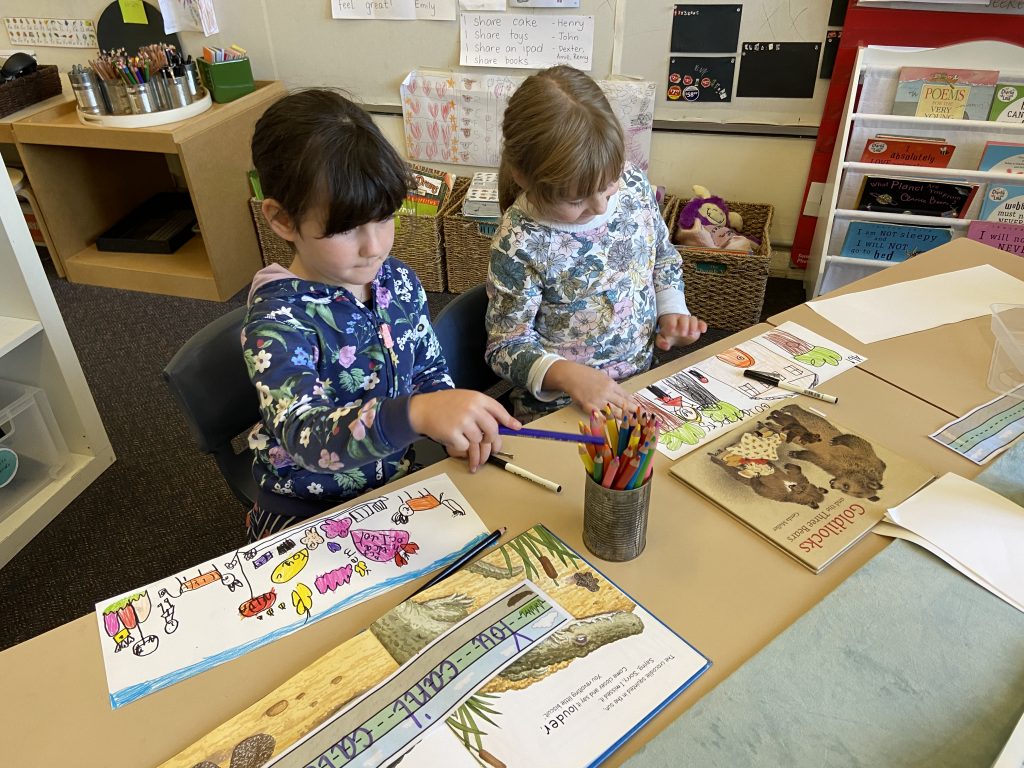
Creativity & Stories
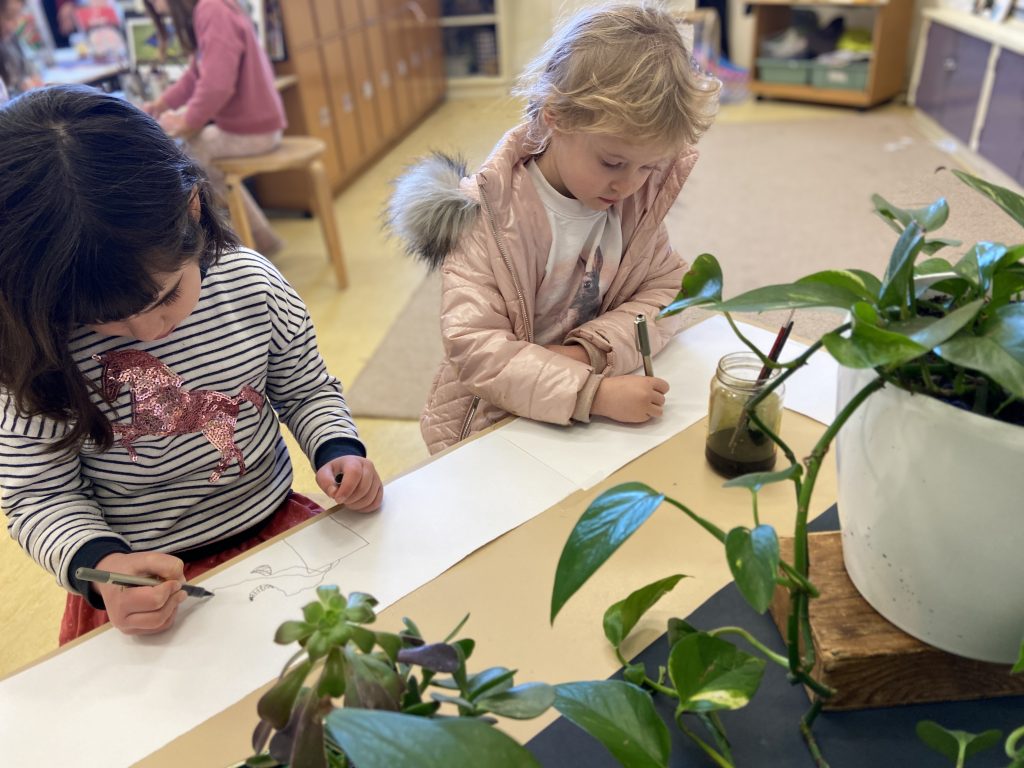
Creativity & Nature & Science 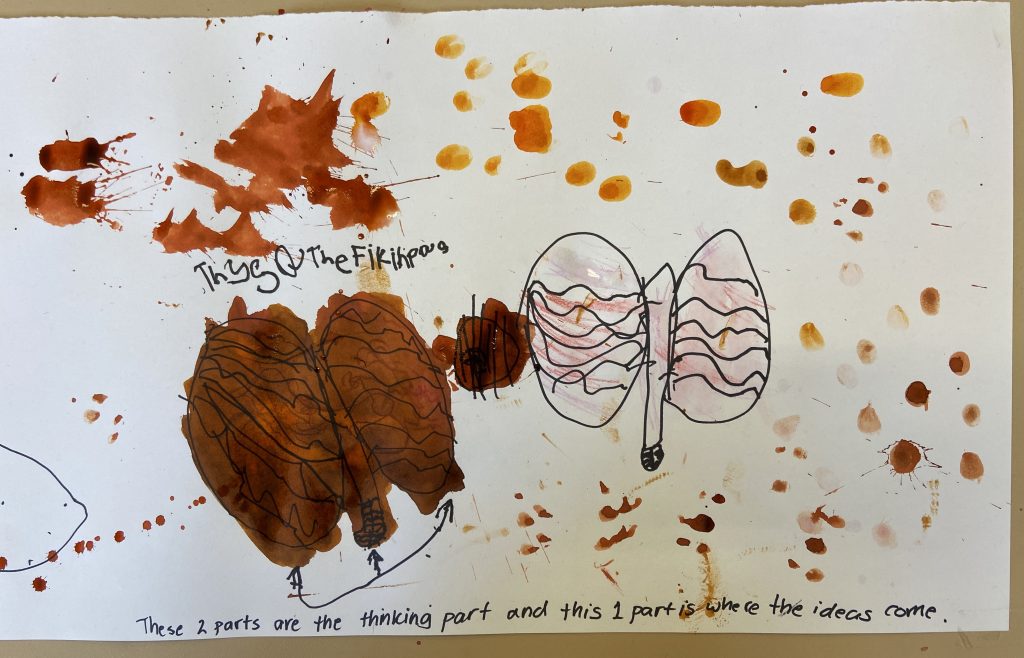
Creativity & The Brain 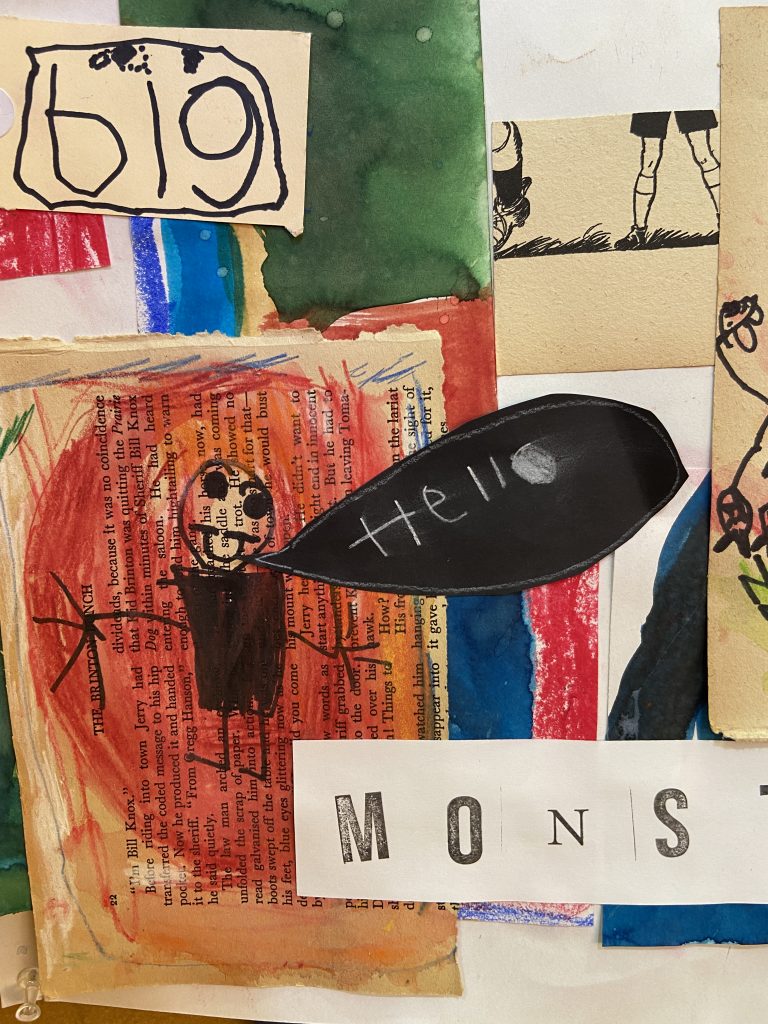
Creativity & Writing 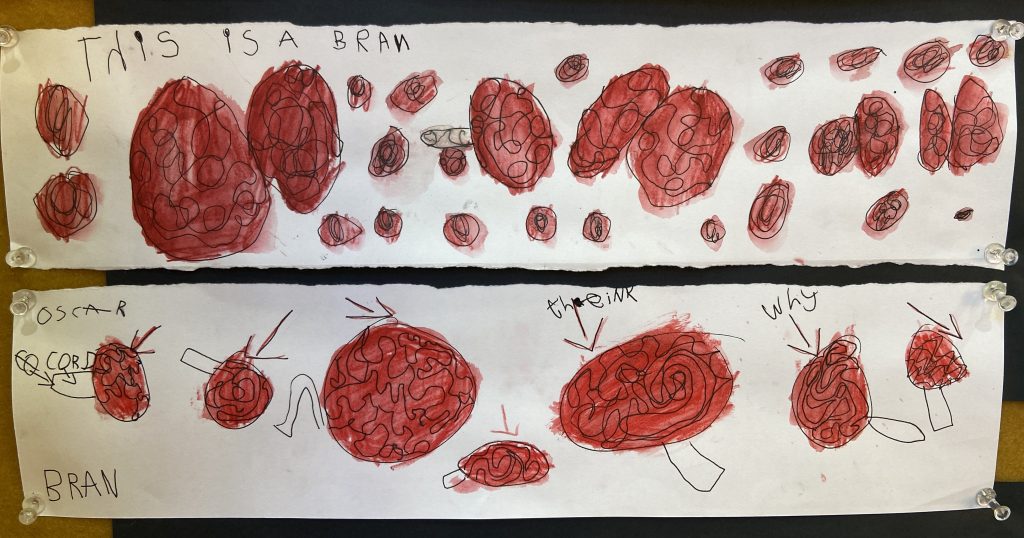
Creativity & The Brain 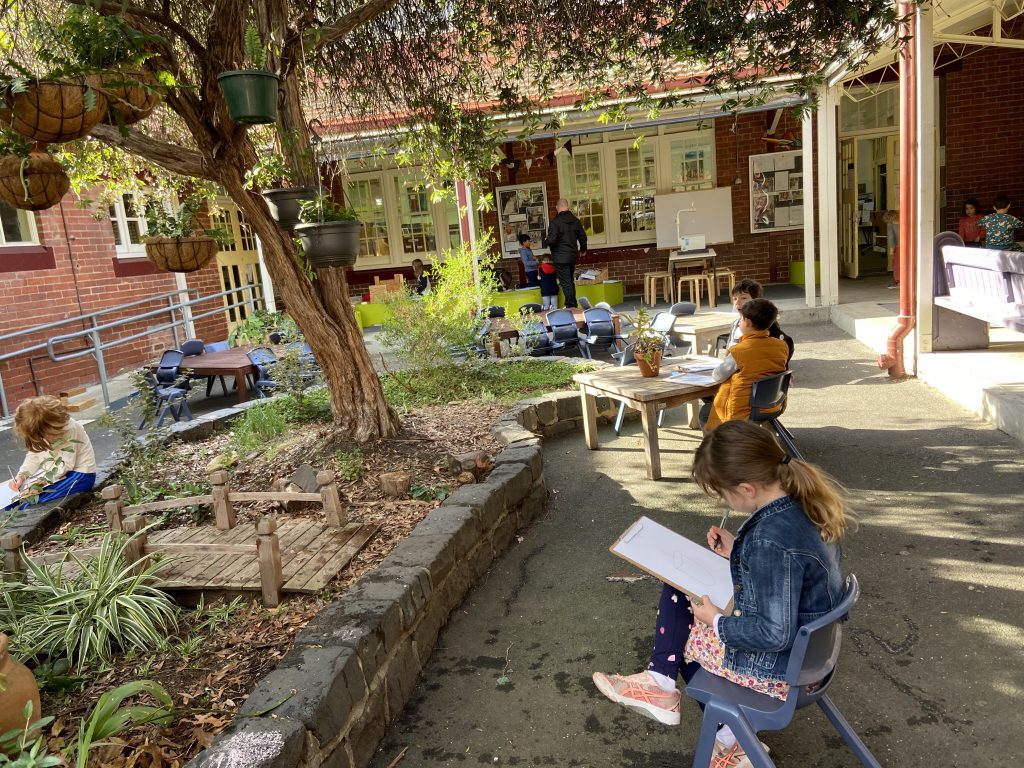
Creativity & Nature
Elena- You can know when you’re being creative because you know what creative is. Your brain might be sending a message to your body telling it what creativity is.
Nellie – What would it be saying?
Elena- It would be saying that creativity is lots of different things. For example, building and doing art really well.
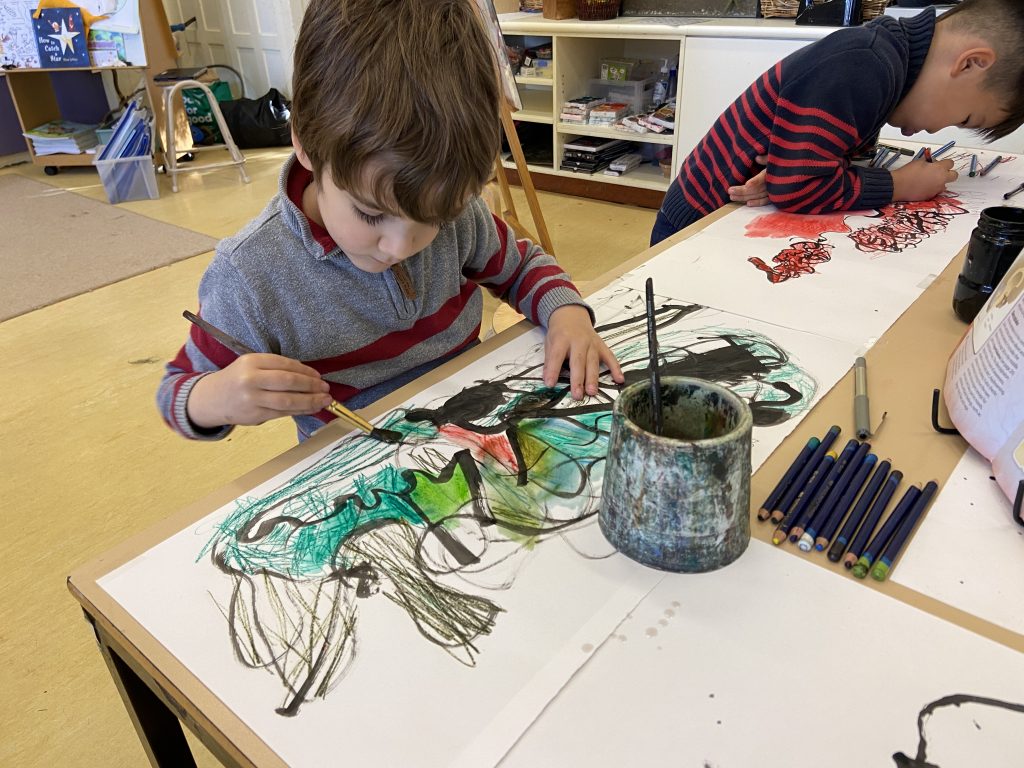
Creativity & Beauty 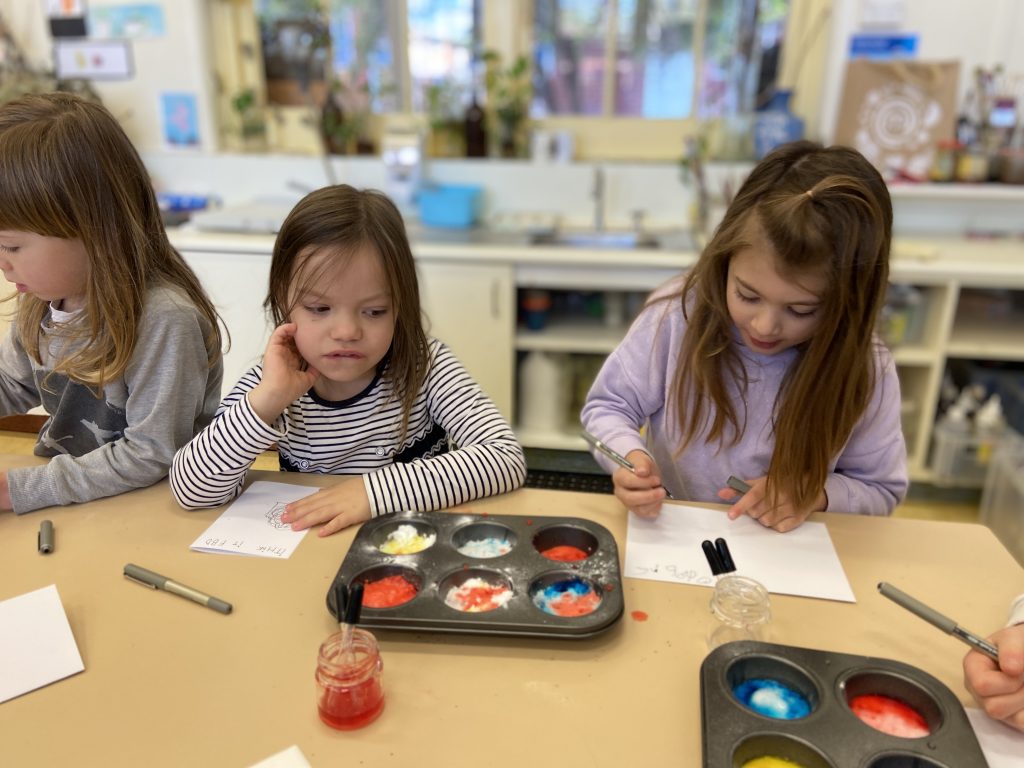
Creativity & Science
Two things,(about creativity) in the Learning Commons and in the studio. When we make books and clay. Matilda
These themes, understandings of them, and skillsets to work with them are developed through engagement with multiple forms of expression and provocations across our unique learning spaces.
Creativity in Storytelling, Writing and Words
Throughout the Learning Commons, students continue to develop their awareness and appreciation of books and storytelling as they learn more about the features and various ways that readers respond to books. We are observing greater motivation and capacity for students to publish stories in creative ways while keeping the audience in mind.
At the beginning of the year, students told or wrote stories because they had an idea to share. Students are beginning to consider features that will draw a reader in and persuade them to continue reading or listening. Some features that students have explored and increasingly included in their texts are titles; their own name as an author and illustrator; sentences that explain the plot and describe events; speech and thinking bubbles, questions of their characters; flips; pop-outs; and fun facts.
Observations from investigations into comic strips, characters and settings reappear in students’ work repeatedly. Students like the way that speech bubbles provide an immediate ‘voice’ to their characters which helps to articulate the events and scenarios. Similarly, comic strips combine setting, character and voice to develop quick stories.
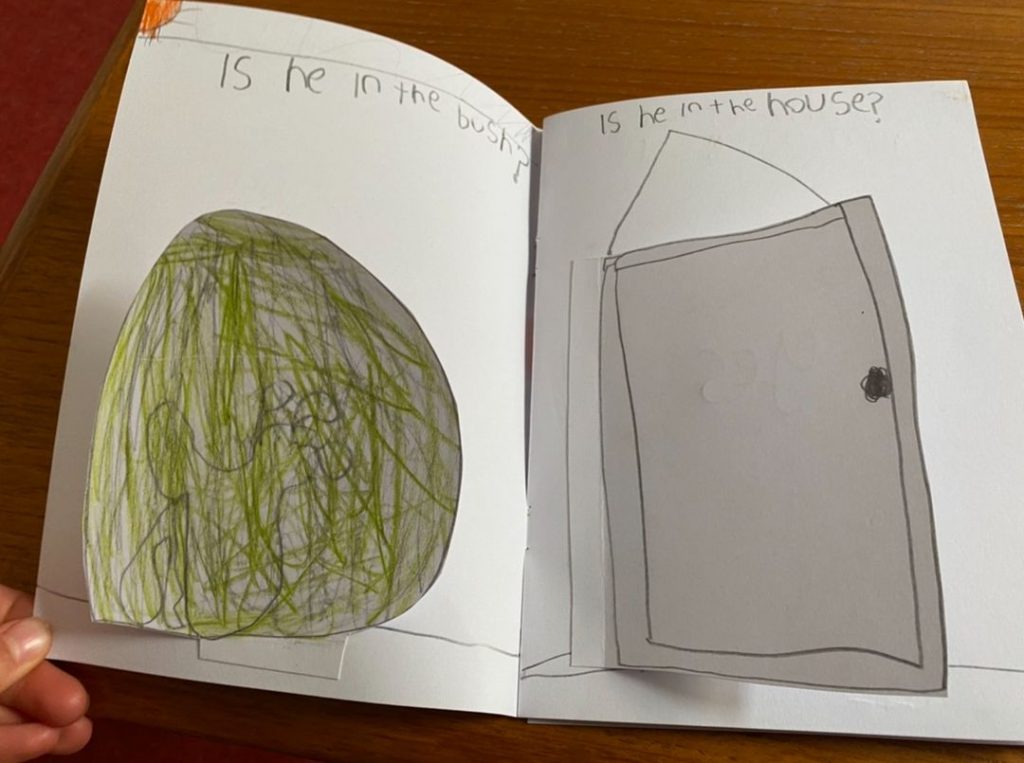
Books with Surprises 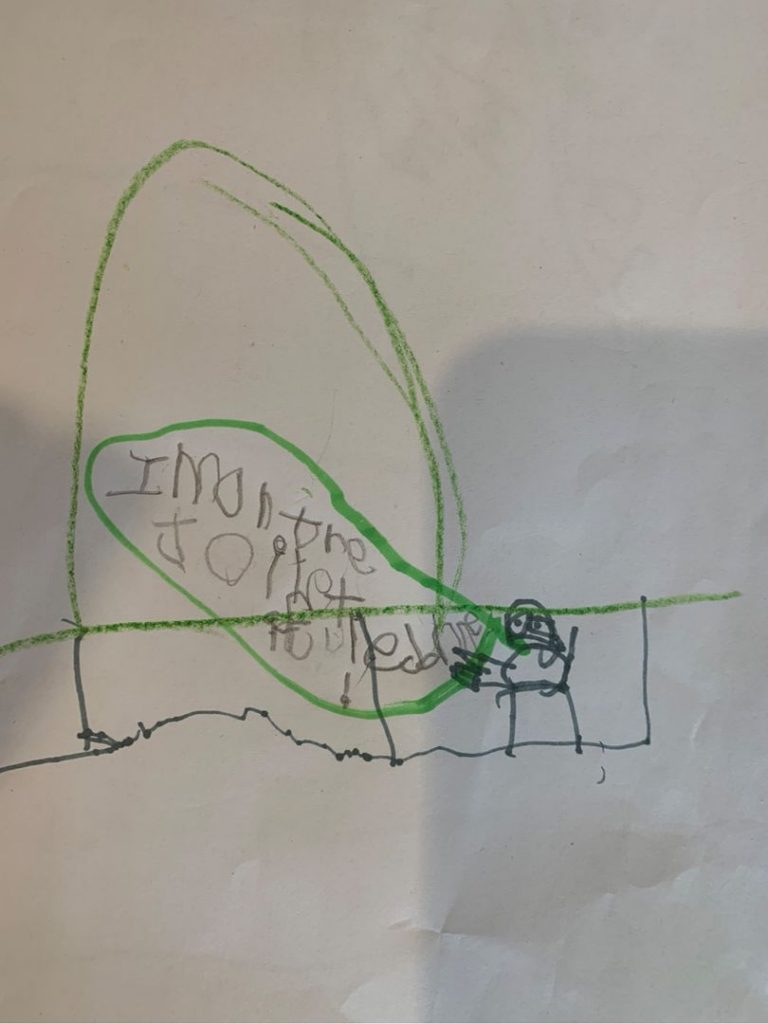
Speech Bubbles 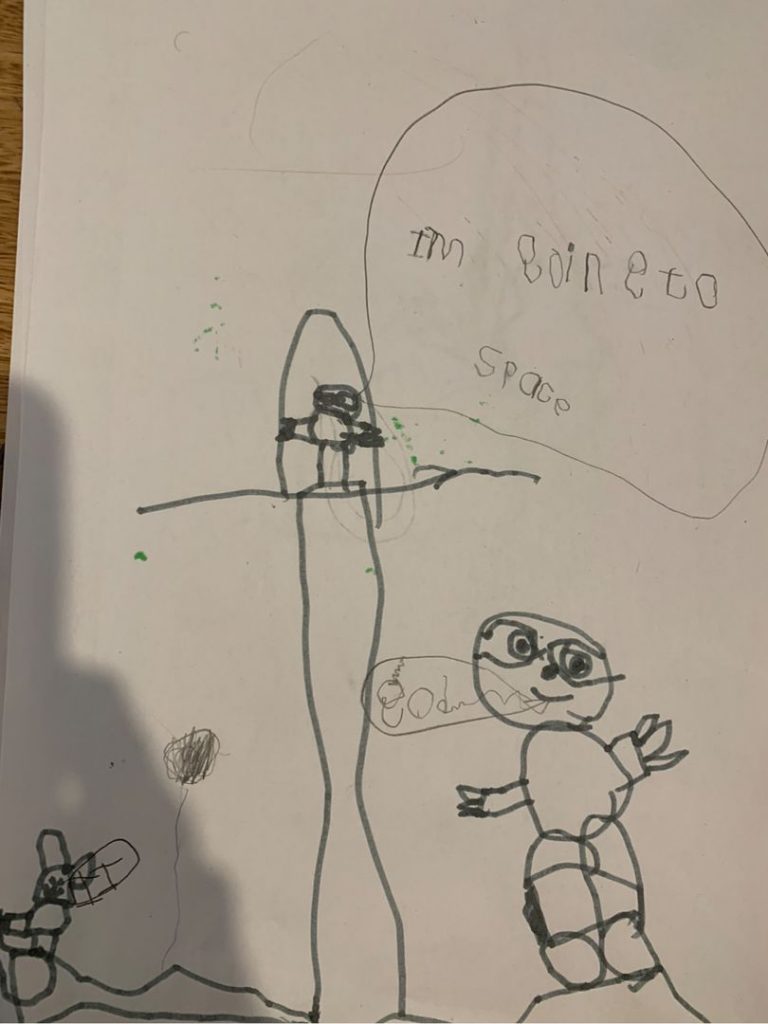
Speech Bubbles 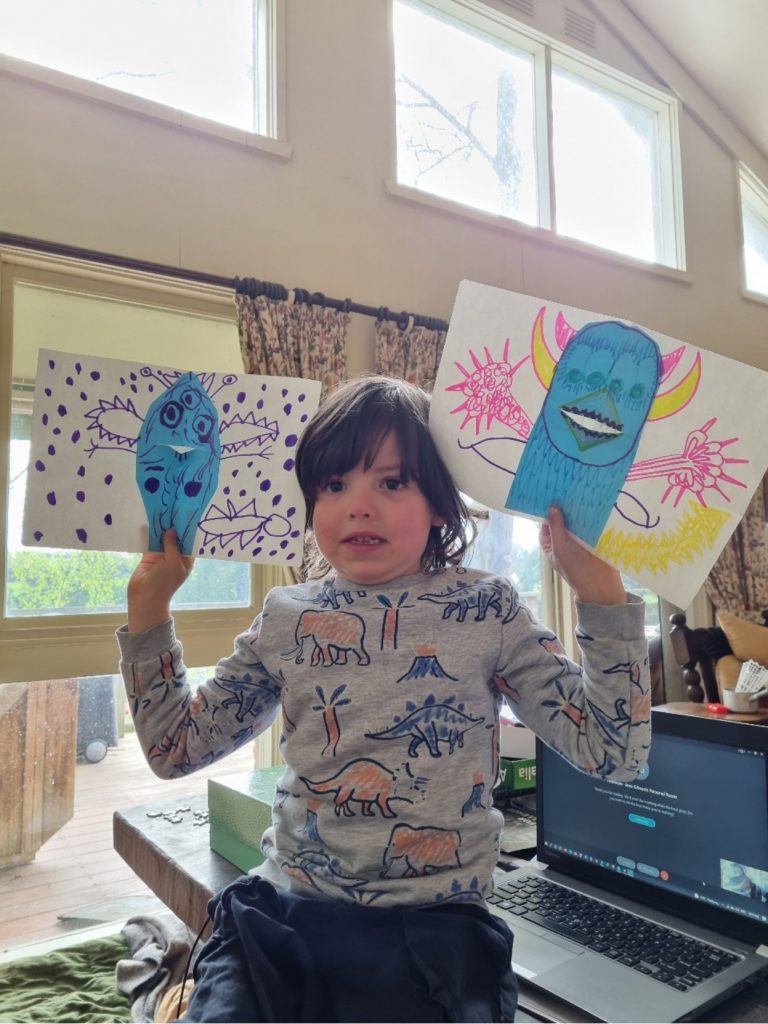
Creative Additions for Books 
Mini Books with Titles 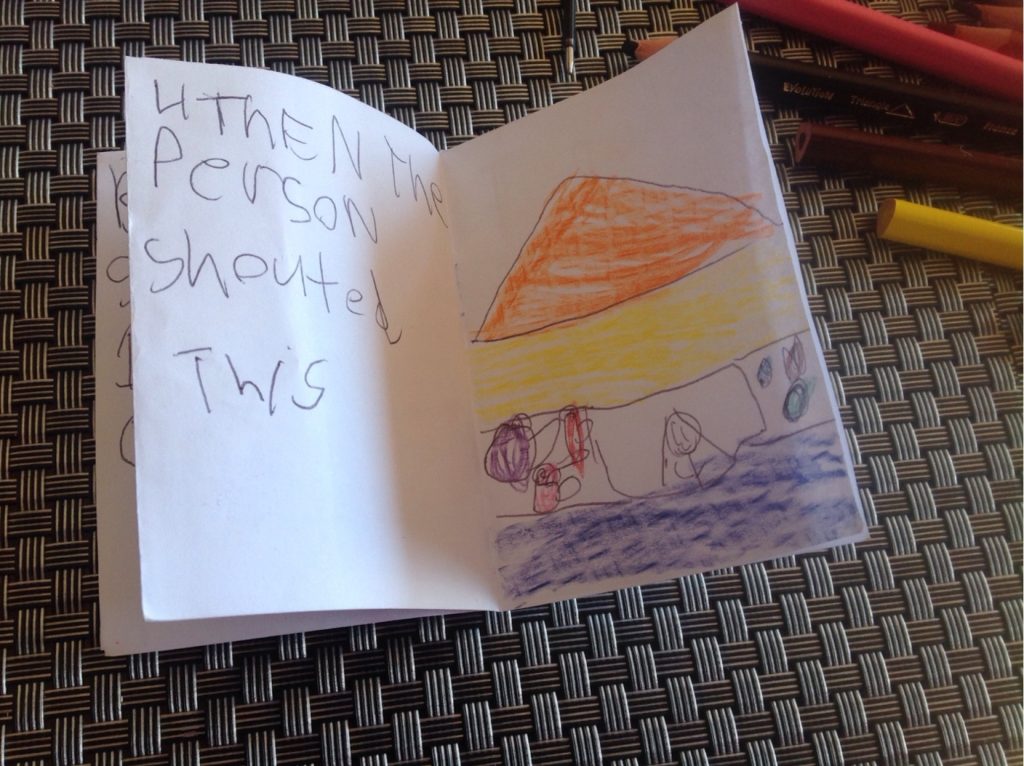
Mini Story Books 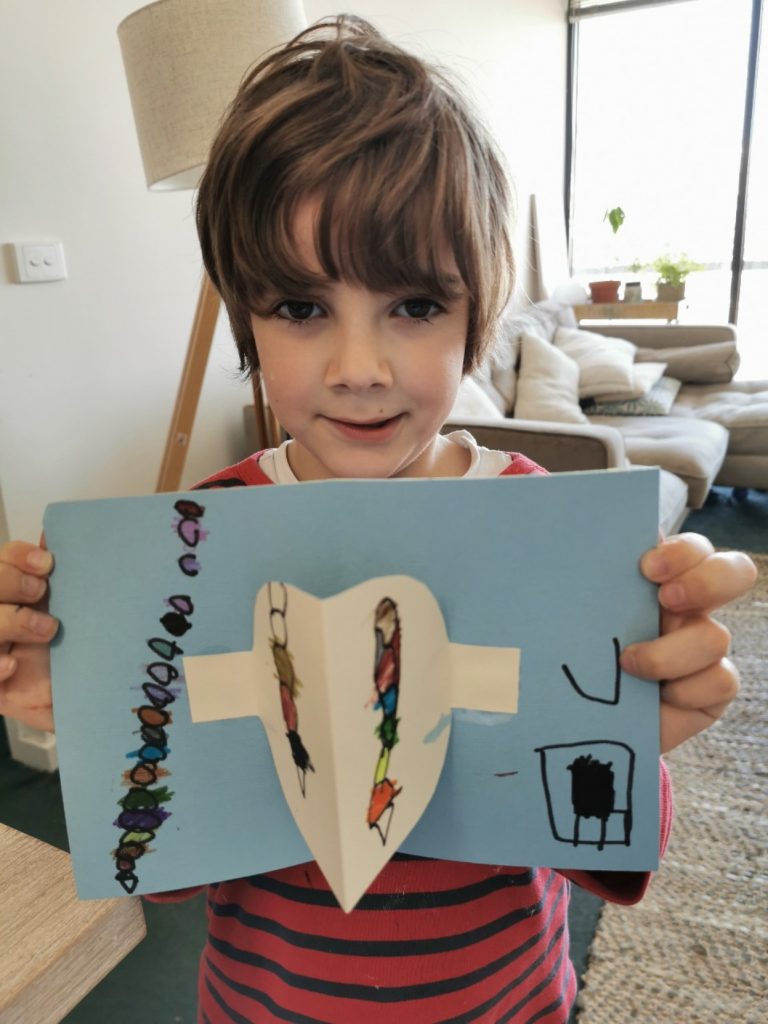
Creative Pop-Ups
In the Studio, students have explored storytelling, text and words in art through observing pop artists, including Dada and Bauhaus artists, as well as street artists within the local community. This term, whilst in remote learning, students explored storytelling, words and text through street posters, again within the authentic context of our local community whilst out walking.
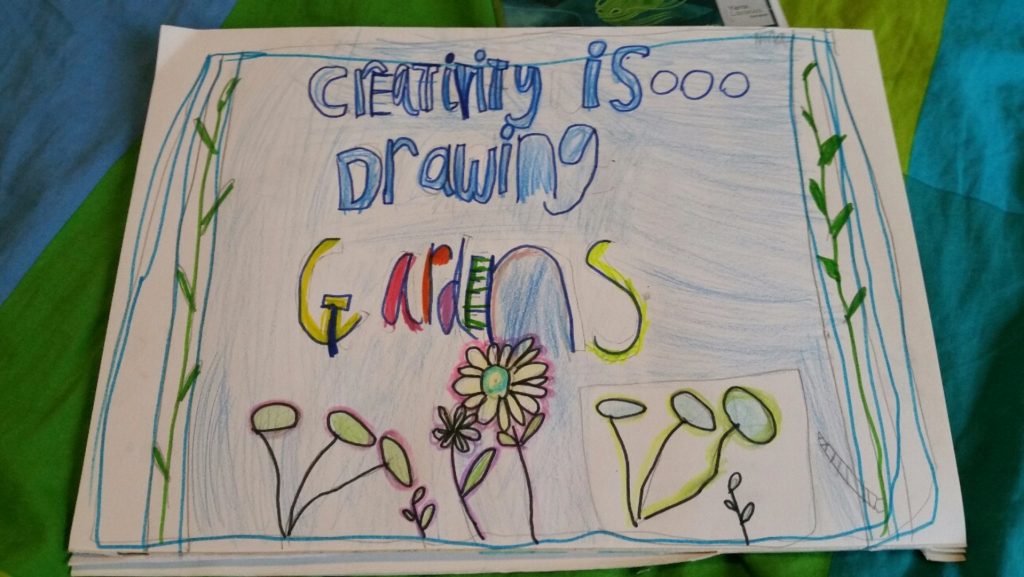
A Creativity & Nature Poster 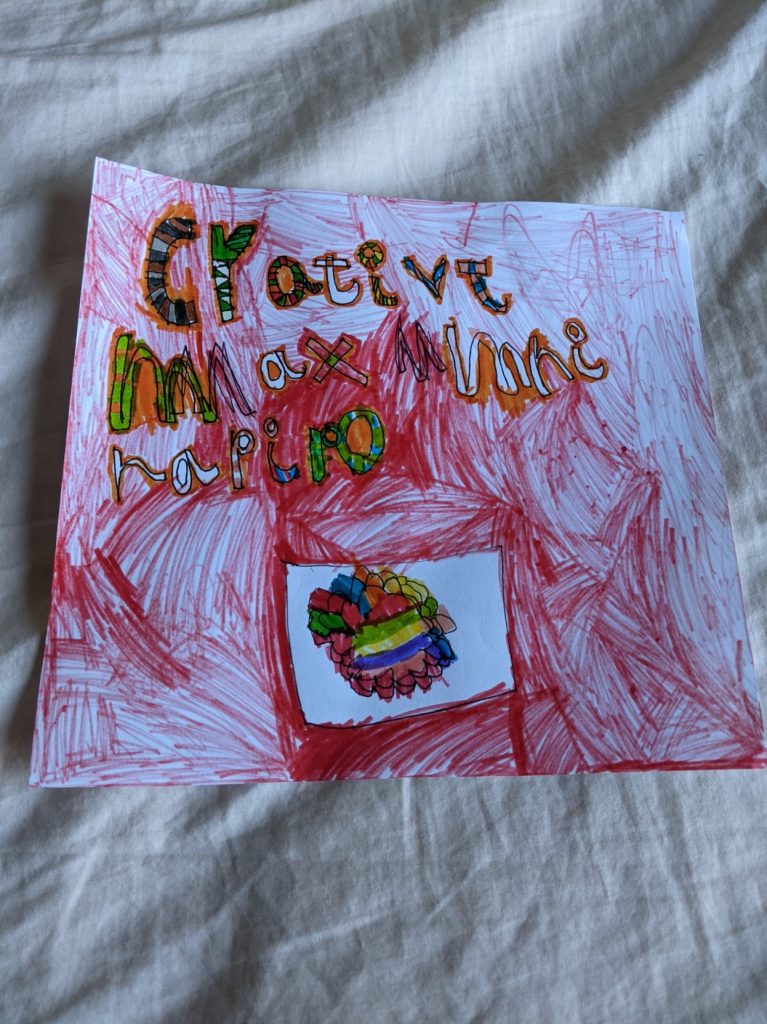
“Creativity makes me happy” 
Exploring posters ans text in our community 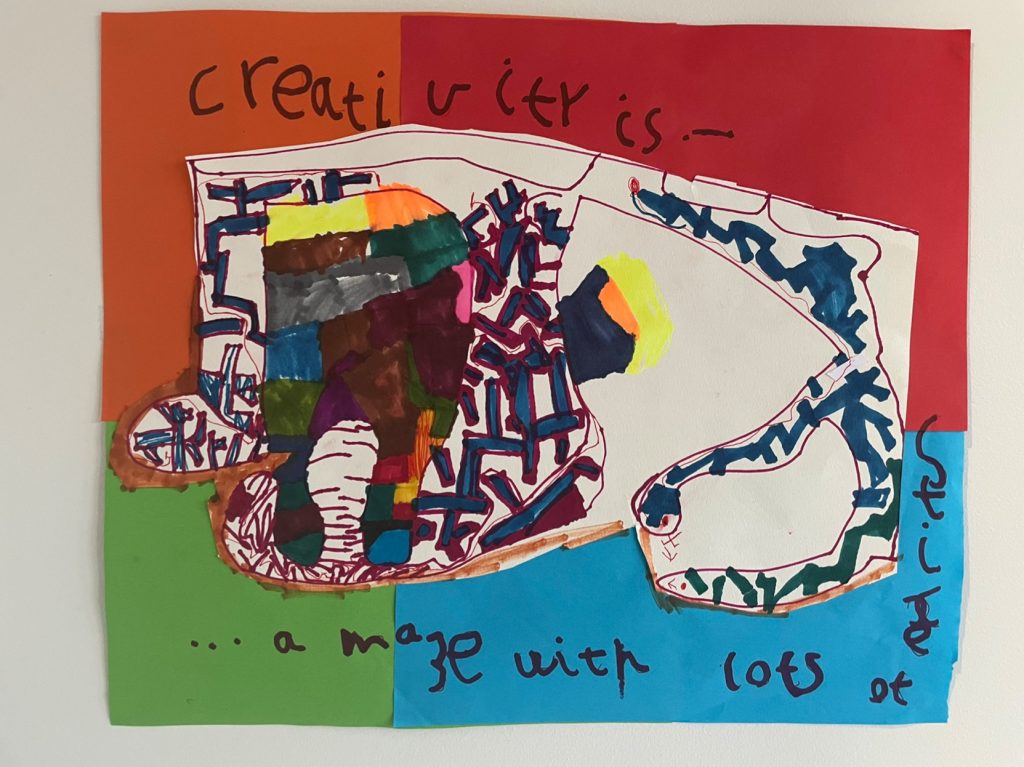
“Creativity is a Maze with lots of exits!”
Creating collaborative artworks that tell stories with the inclusion of speech or thought bubbles has been a constant in the Studio as is using sentences and words to label or title our drawings. These inclusions are most commonly exemplified through still life drawings and our inquiries into birds and their nests.
I see creativity in the studio, making things like dinosaurs with speech bubbles. Nina
Creativity and Nature, Science and Our Brains
The introduction of theatre, onomatopoeia; as well as the art of oral storytelling during Book Week sparked an ongoing inquiry into ‘sound’. Developing our sense of how we convey a specified sound and the impression or understanding others are left with again encourages students to consider their audience and method of communication. This also has students considering elements such as volume, pitch, whether a sound is pleasant or enjoyable, or whether the sound is created by force through striking, shaking, blowing, etc.
The art of ‘observation’ can be the beginning of understanding scientific concepts. The Studio has been a place to harness observational skills through carefully drawing nature, our Prep Courtyard Garden, and a variety of still life compositions. Also, the Studio space has often hosted simple science experiments and opportunities to perform, observe and record reactions when mixing different colours and agents. The Studio has also hosted explorations into the biology and thought processes within our brains.
This is…a rainbow (mobile) and when the wind pushes it, it will hit together and make a sound and if it is lucky or not it can make a song…twinkle, twinkle little star. It is made from plastic… Guy
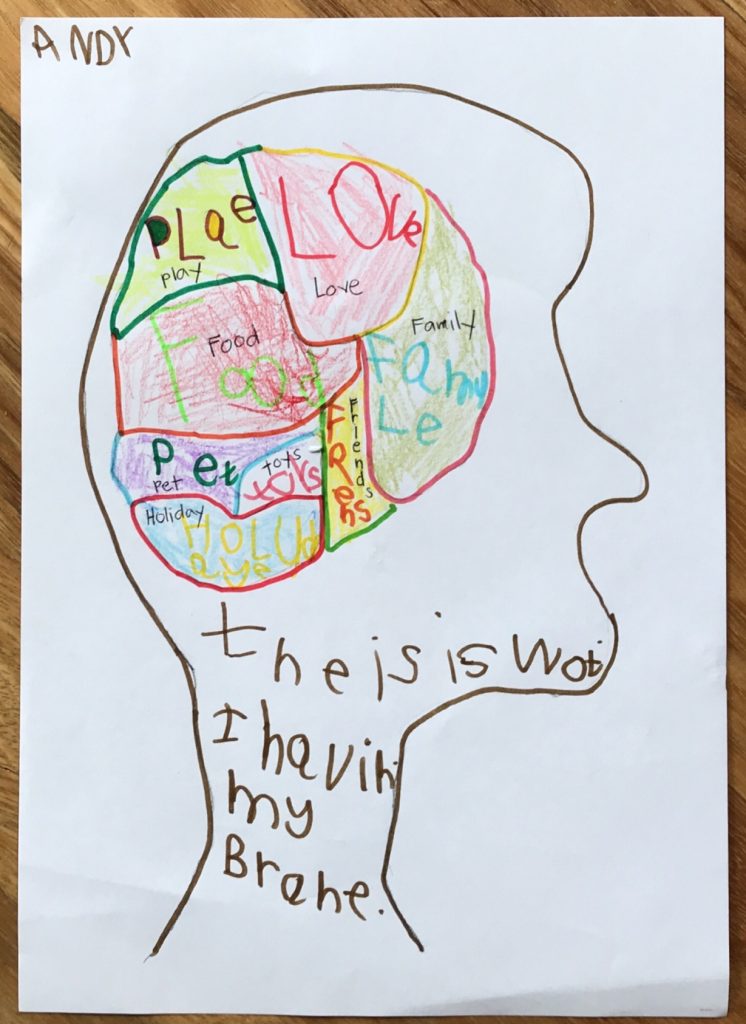
The Science of Brains 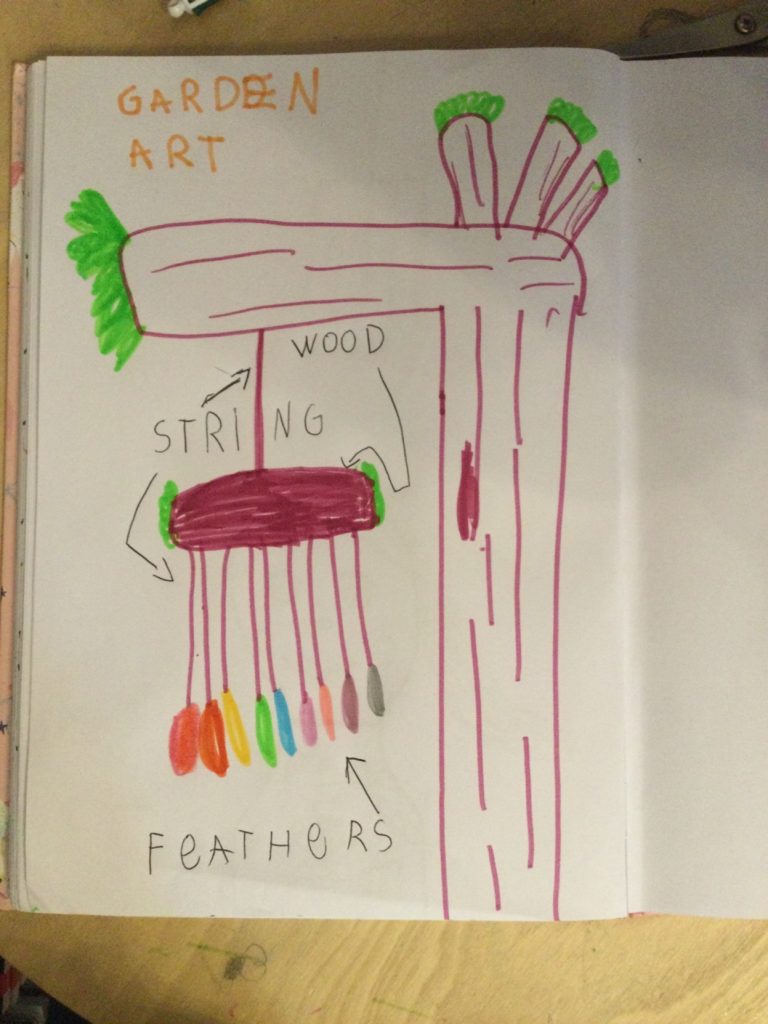
Designing Garden Art 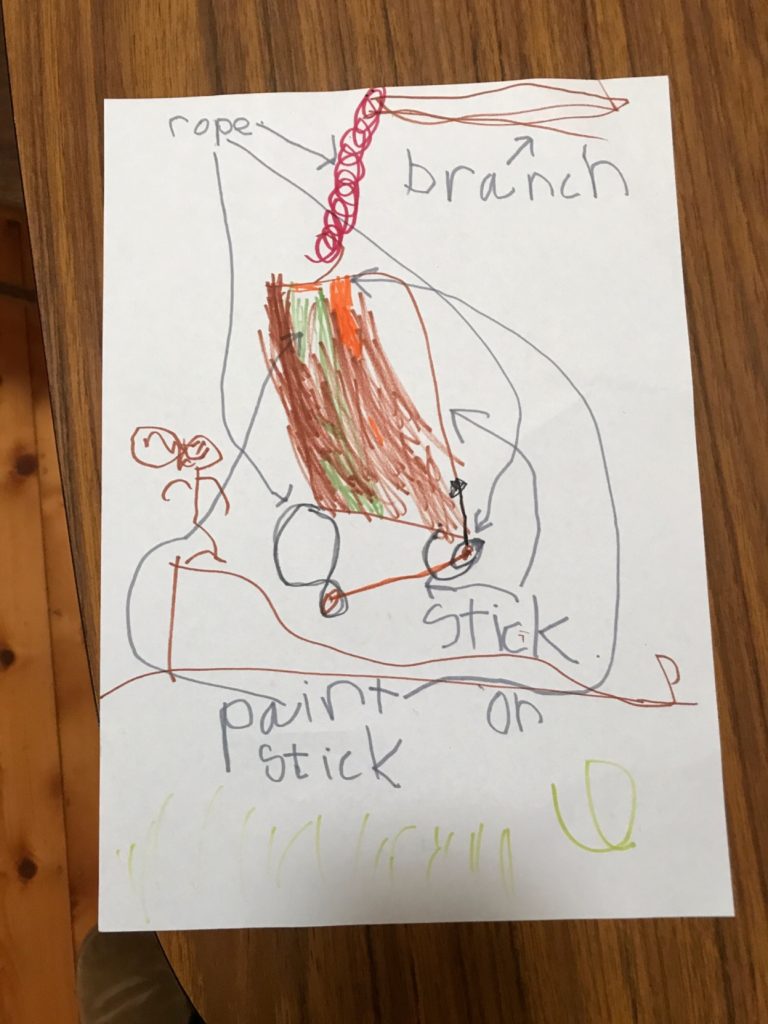
Designing Garden Art
Creativity and Beauty
Through a focus on the art of books, students continue to observe the ways in which fiction and non-fiction texts are published to appeal to their audience. Collectively, students recognise and praise efforts by authors, illustrators and their peers to create beautiful illustrations and give careful attention to detail. Students understand that attention to detail, including handwriting, is an indicator of beauty and an intent to engage an audience.
Eren is really good! Look at his drawings! Billy
Beauty is a constant companion to life in the Studio and collectively students seek to understand it and explore it further. Often a provocation in the Studio is designed with nothing more than the intention of exploring and provoking beauty. Beautiful materials can often lead to finding authentic pathways for our collective curiosity. For example, the emergence of inquiries into the brain came from a series of ink abstract drawings, and our continuing observations of nature through observational drawings has continually been provoked with new compositions and drawing tools. During remote learning, provocation such as ‘The Beauty of Colours’ and ‘The Art of Flowers’ both elicited thoughtful, beautiful, and creative responses from our children and presented new ways to explore beauty.
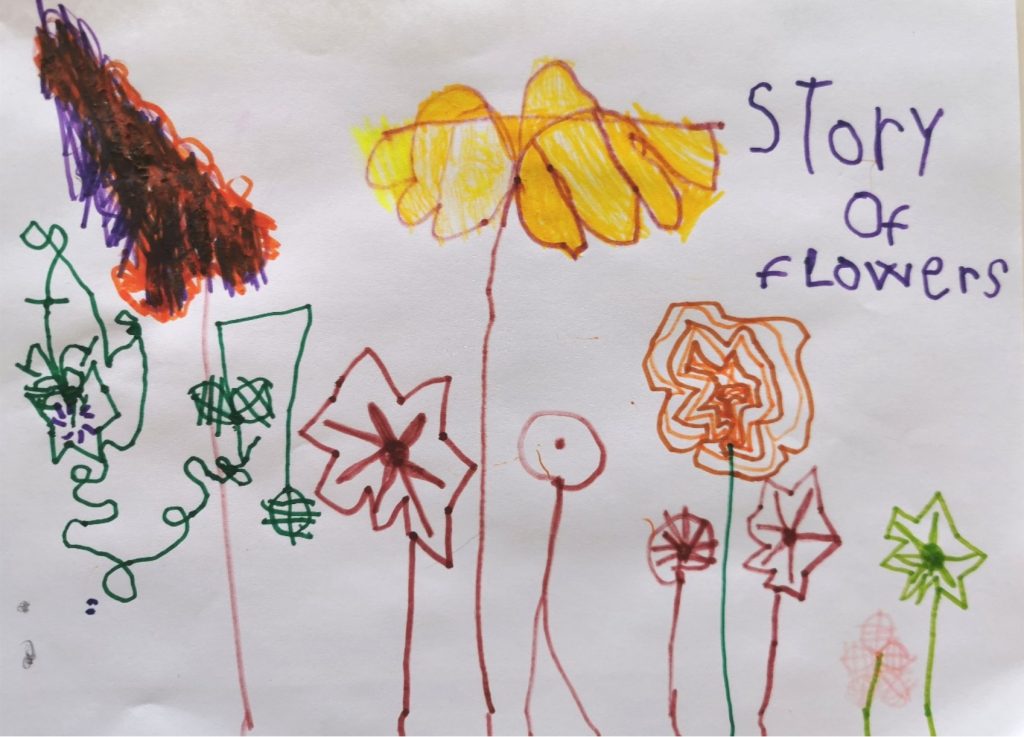
The Art of Flowers 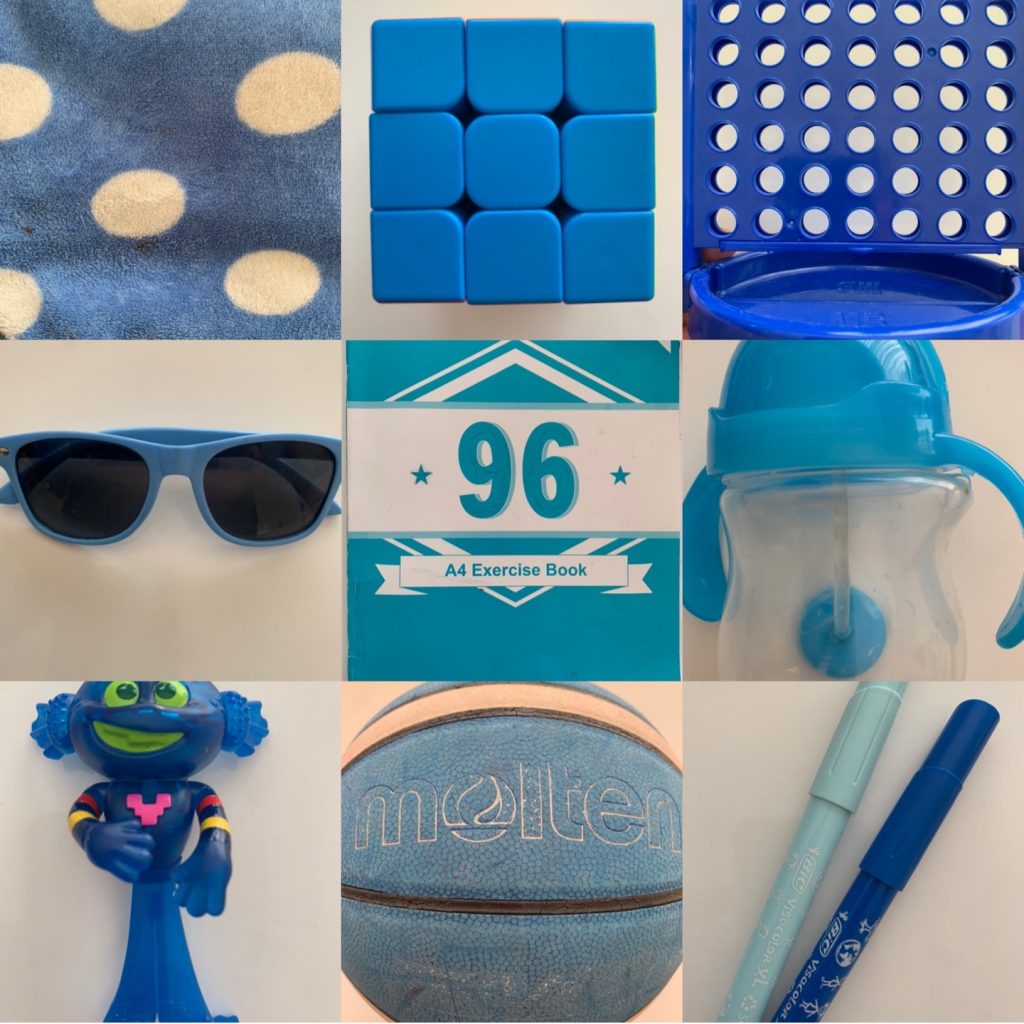
The Beauty of Colour 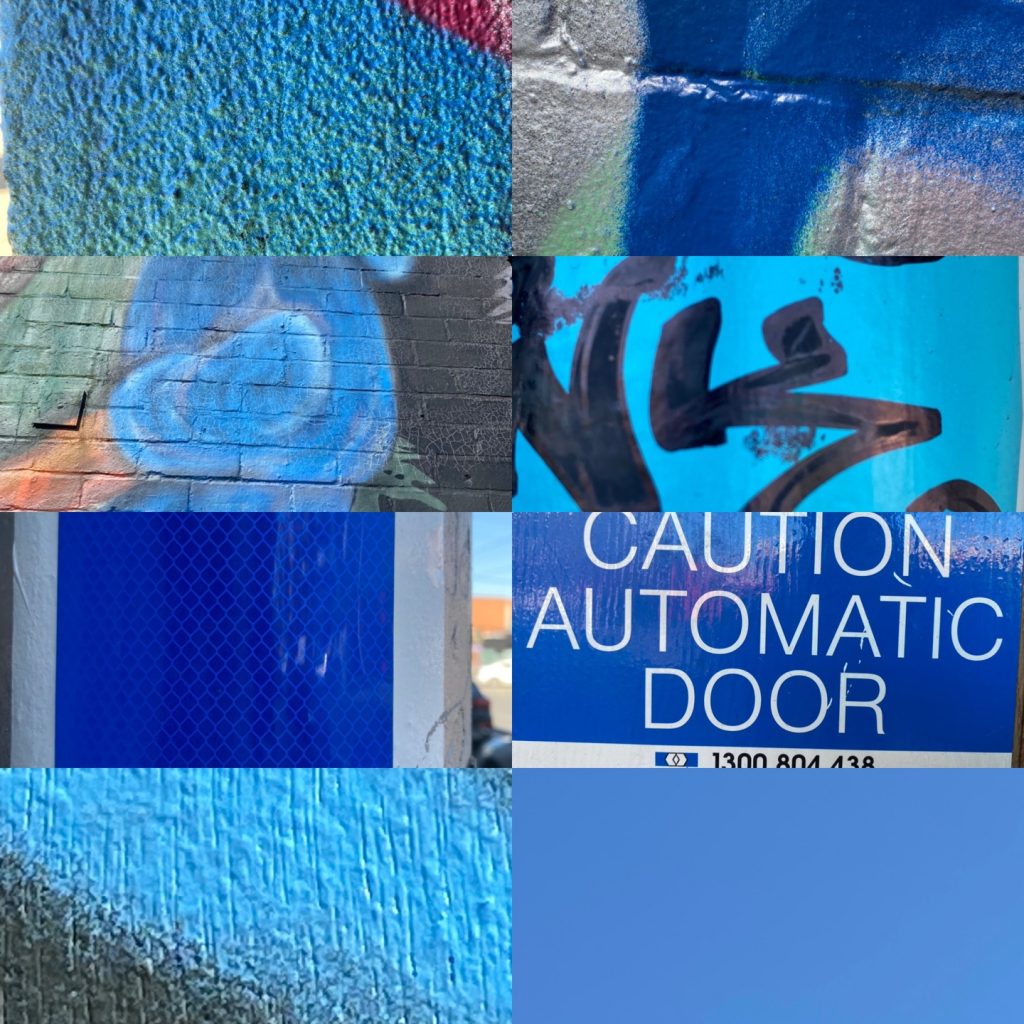
Finding beauty in colour 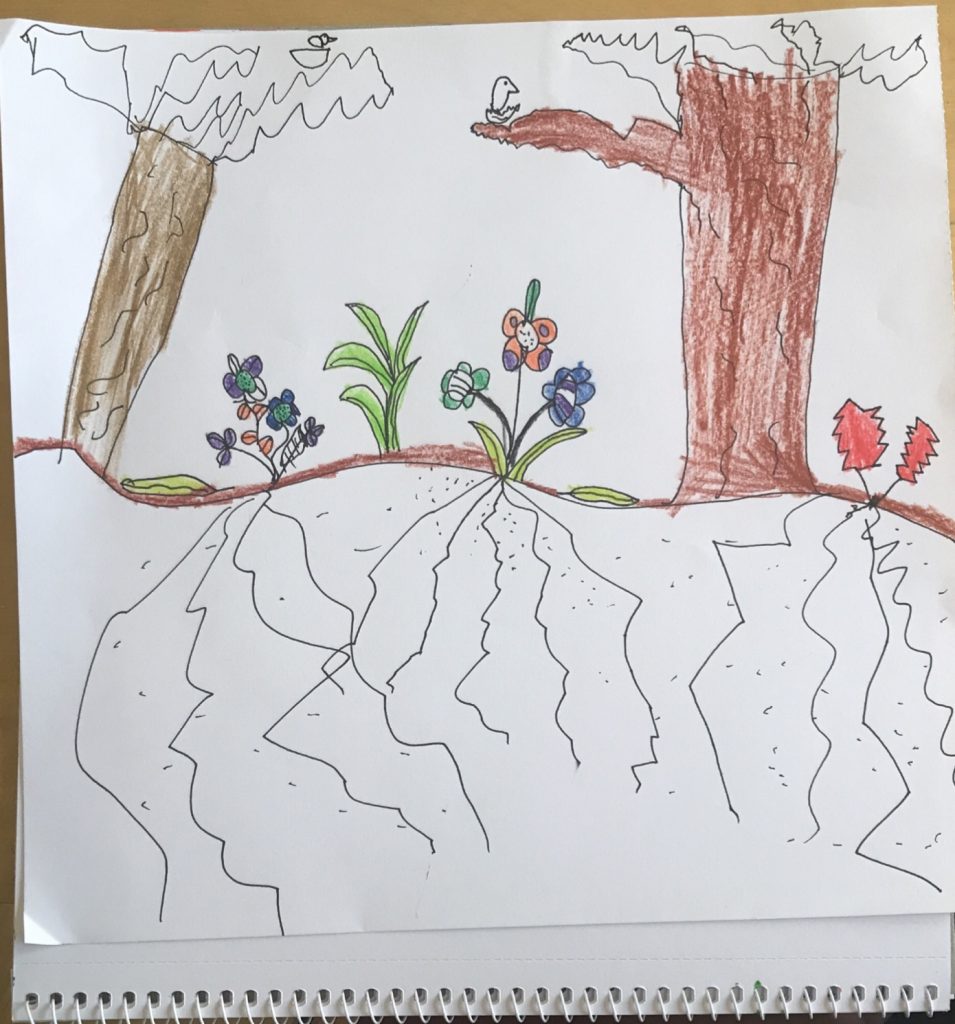
Beauty in nature 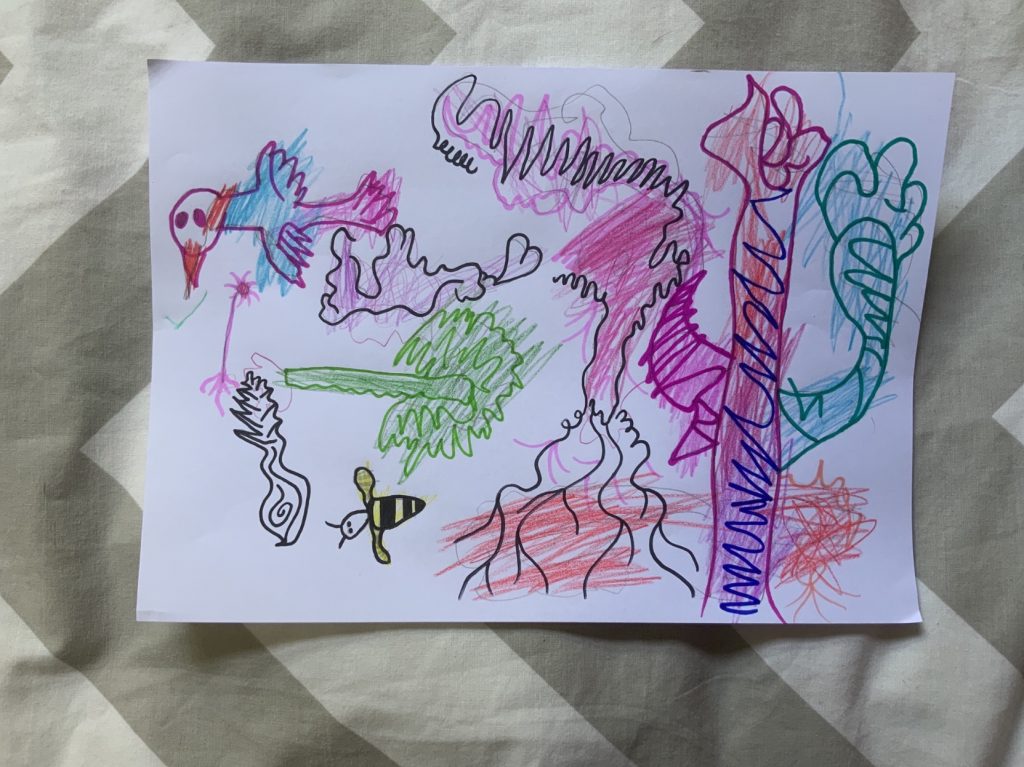
Inspiration from the beauty in nature 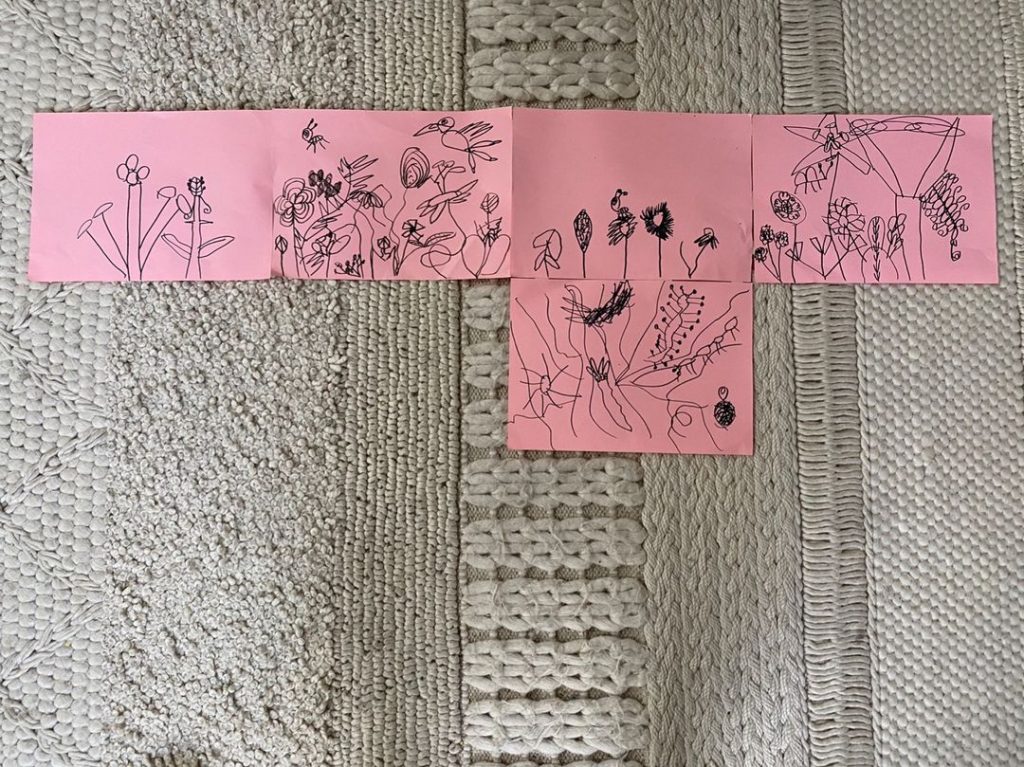
Inspiration from the Art of flowers
Creativity and Construction
Through building, constructing and research into builders and constructors, children have explored, intertwined and developed collective understandings of creativity that connect all our themes.
In the Construction Space, students have explored concepts of storytelling by manipulating props and settings within problem-solving contexts. This journey began when students started creating creatures and vehicles and imagining that they are characters. We introduced the concept of setting to this activity and students began to explore how characters interact with settings and in turn how settings present problems for characters to face. Students also enjoyed exploring the many possibilities of incorporating different materials into a setting or story. For example, a red piece of fabric could be a desert, mountain, sun, dirt, factory, tail, cape and much more, with each presenting a new set of problems for student’s created characters. Later, students were challenged to manipulate and invent props to solve presented problems within known stories.
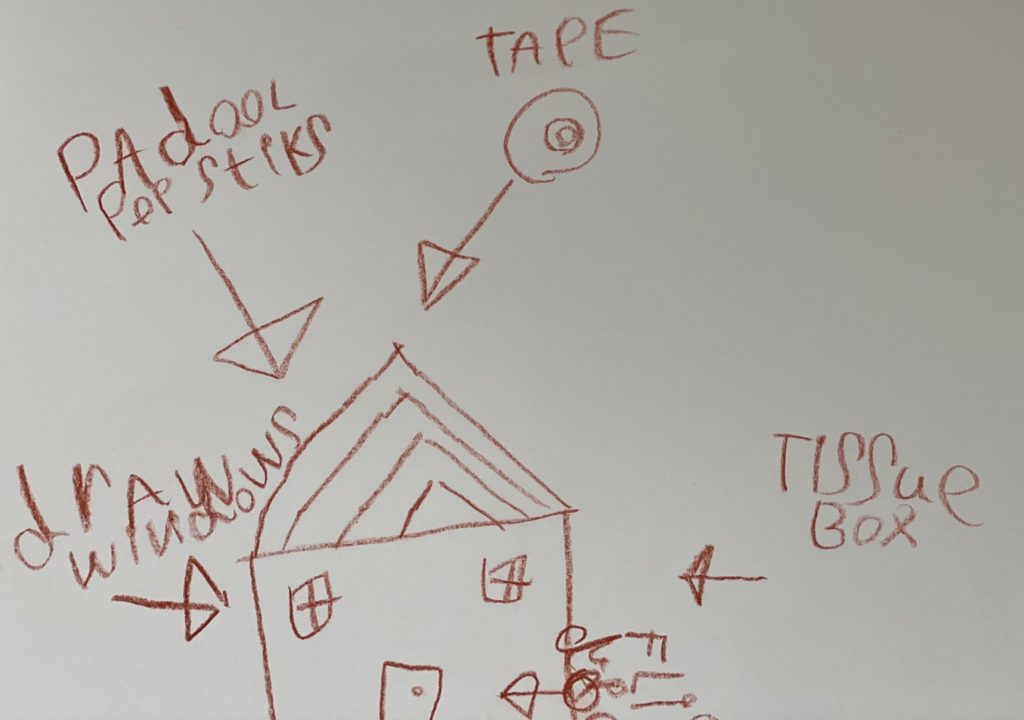
Designing a house tough enough to beat the wolf! 
Using a pulley system to save Rapunzal. 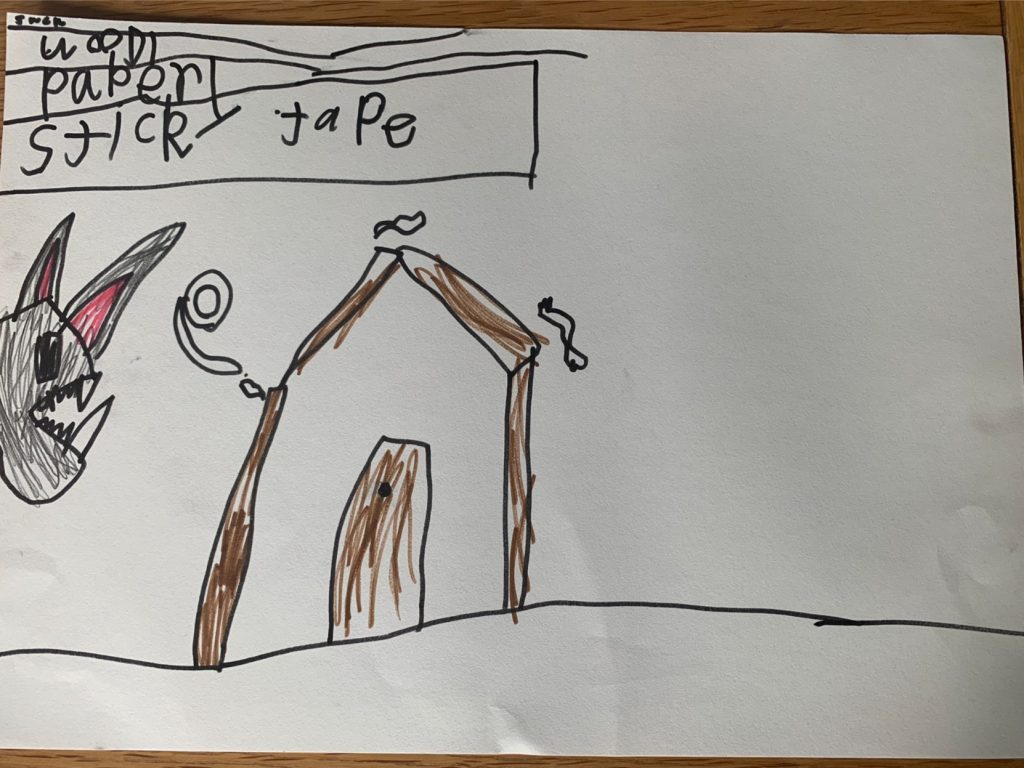
Designing a house to beat the wolf!
Throughout the whole year in the Construction Space, students have explored a myriad of science and engineering concepts. Predominantly, this includes the exploration of physics, force and simple machines, which has been sparked during provocations while building paths, vehicles, spinning tops, contraptions, playgrounds, racing tracks and more.
Ok so it’s not blowing down, but I think the little piggies are getting too winded so how I’m going to improve it is by putting some walls on it. Dale
Most recently, inspirations from nature and stories have led to explorations of materials and biotechnologies. In many different contexts, including problem-solving, children have enjoyed testing materials to make observations and develop understandings about how different features affect the strength, sturdiness, stability, balance and buoyancy of materials. Some of these features are weight, density, hollowness, absorption, size, shape and quantity. Research into natural phenomena sparked admiration and understanding of biotechnologies such as aerodynamics, stickiness and suction as well as how different animals manipulate their worlds to create strong, sturdy, stable and safe structures.
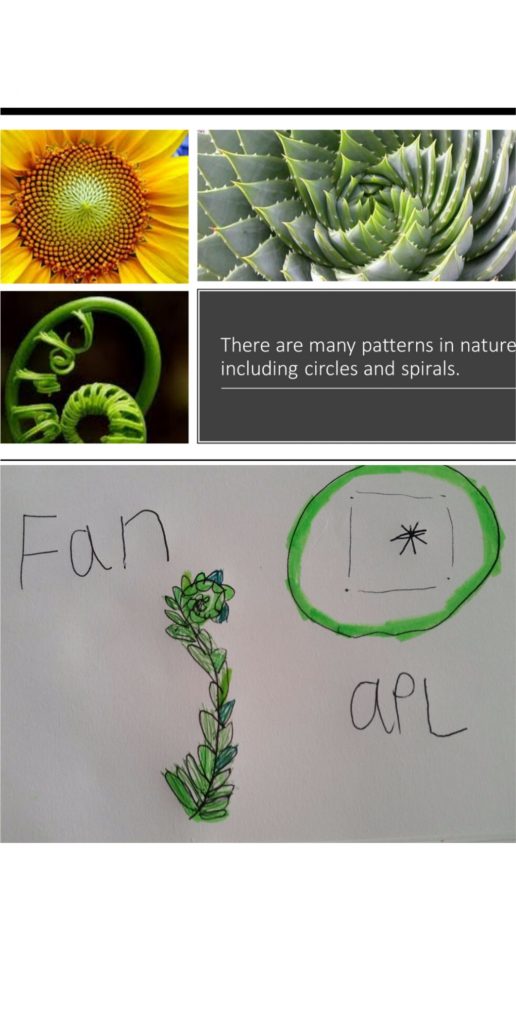
Exploring shapes in nature for construction 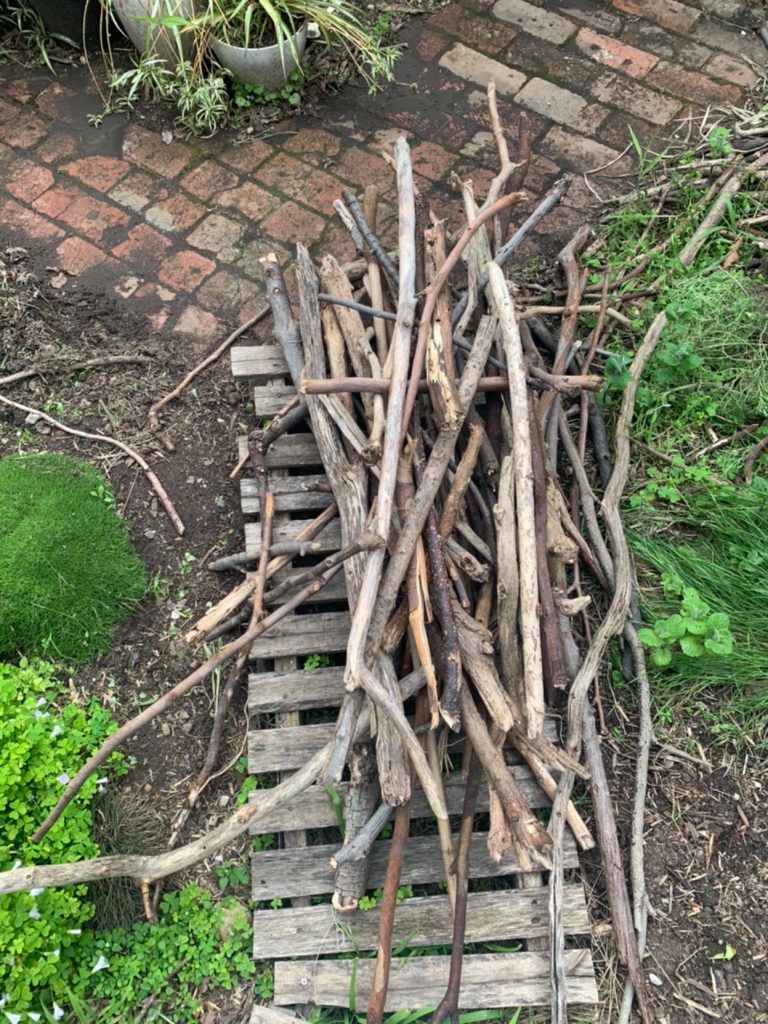
Exploring Natural Materials 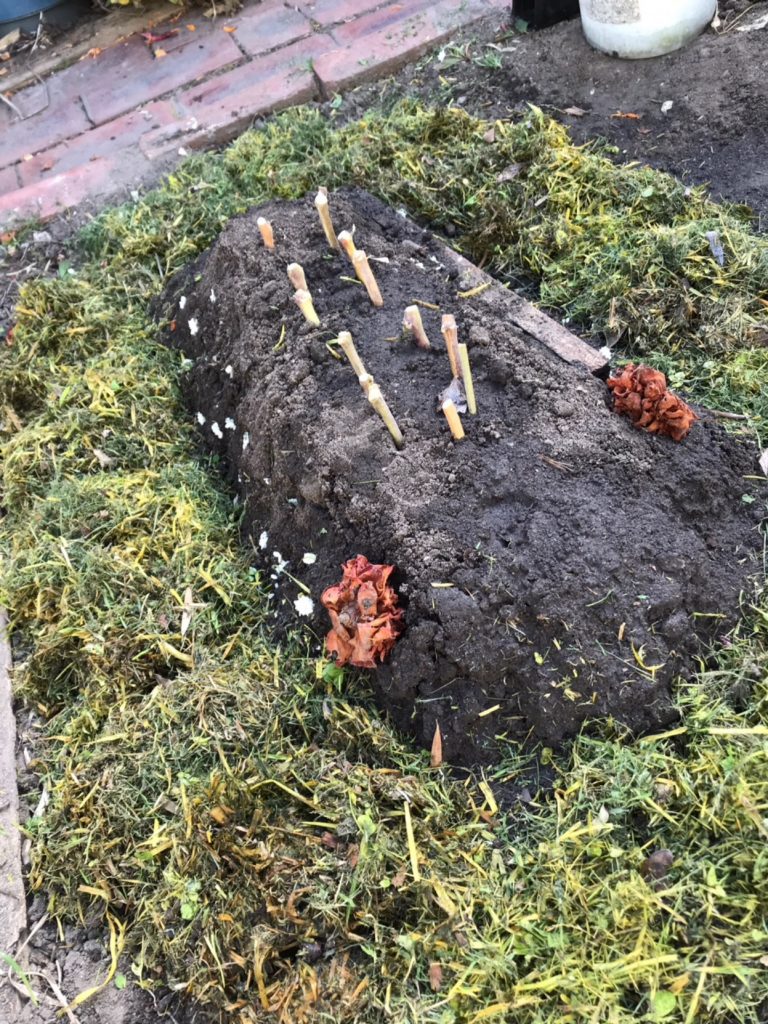
Constructions Inspired by Nature
…this is like a rope ladder you can climb up, and there’s a swimming pool in there and that’s a pole you can slide down, and there’s a helter-skelter and there’s a decoration and there’s bug decorations on the walls…(they are made from) metal, wood and water…glass and plastic…these are actually windows…” Henry
Beauty was not a concept that was explicitly introduced to the Construction Space until recently. Once introduced, students’ observations, appreciation and connections of beauty and nature came to the forefront of their thinking, noticing and wondering profoundly. With this, students also demonstrated their increased capacity to analyse how patterns, shapes and colours work together to create beauty. This sparked research and inquiry into artists who use constructive mediums, and architecture to discover how experts utilise pattern, shape and colour, and inspirations from nature.
…wavy, straight shapes, bent shapes, ovaly…just all sorts of weird shapes… Dale
So this is a pitcher plant and this is the ladder so you can basically climb up on it and people can go in this thing…they are constructed from metal…golden metal… Isaac
This kind of looks like a plant (sculpture), but it is made up of a pretend-a little fake plant pot which they actually made out of metal…(the petals) which is actually made out of glass…it’s beautiful isn’t it!
I feel like all nature is beautiful and happy and proud…I had to design in my head. I didn’t just put pieces all over the place, I had to design in my head to get them all perfectly lined up the way I like them. Dale
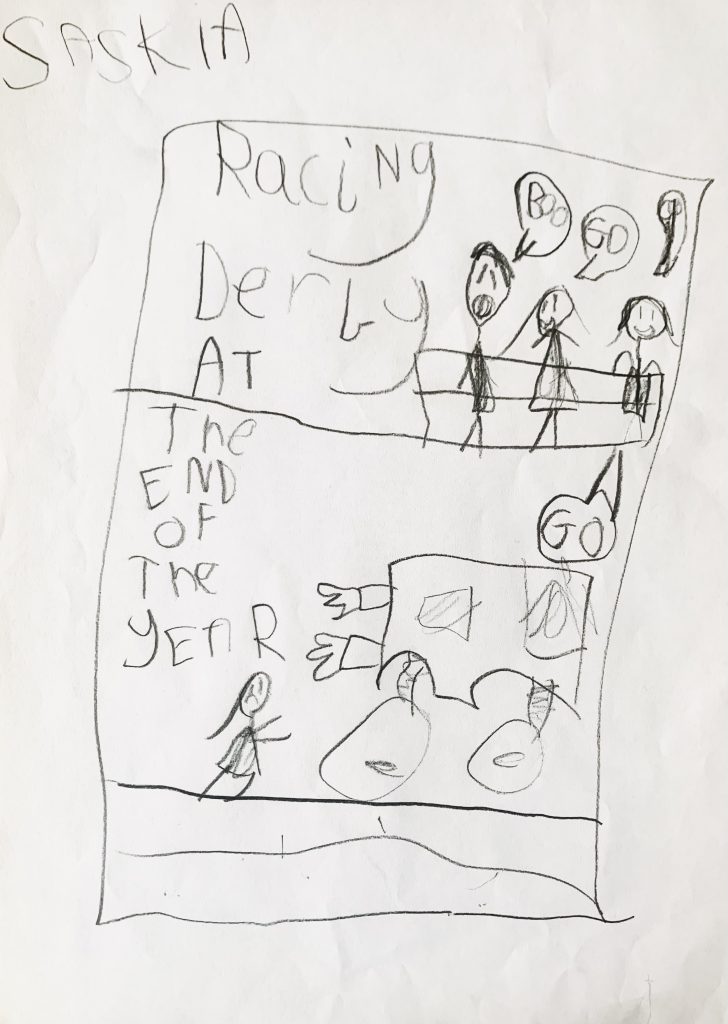
Planning & Designing for Derby Day 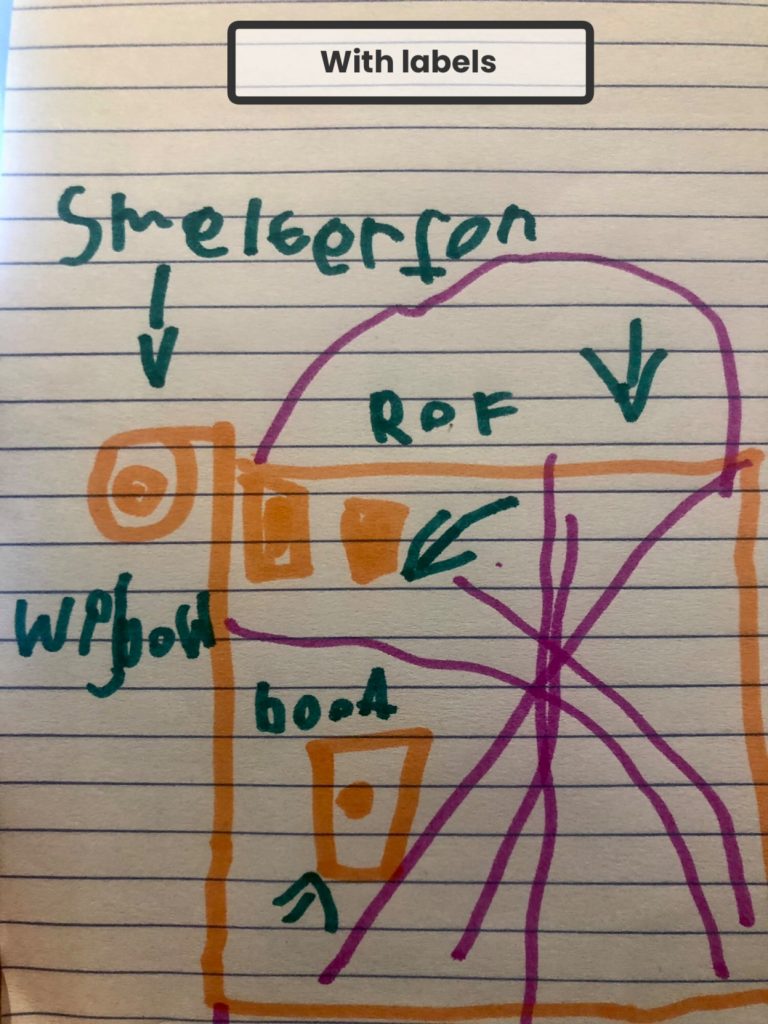
A Community Library Box Plan 
Designing a 100 Bird Mobile
As we turn our thoughts to our final term together, we are genuinely excited about working with all the students towards our project groups and exemplifying and sharing all our understanding of creativity. These projects include a Derby Race Day, Community Library Box, 100 Birds Mobile and the possibility of Community Posters. If possible, we are keenly seeking parent support for the fruition of these projects.
Birds hanging down from the studio roof. They can have speech bubbles about creativity. Jesse
Creativity is about learning new things and sharing because then the other person can learn new things. Otto

